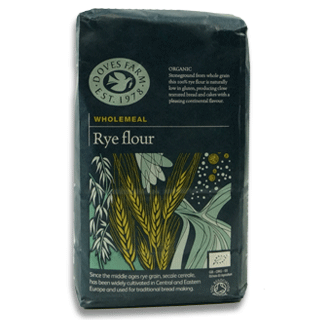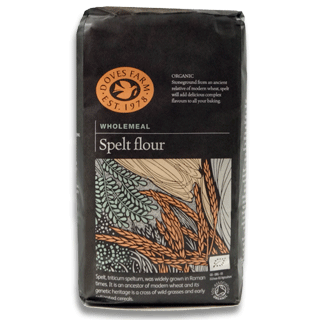
Flours that I use regularly are listed below






KAMUT® Khorasan Grain is a trademarked type of khorasan grain or triticum turgidum, from Montana in North America. This type of wheat originated in an area called the Fertile Crescent, a region of land which spans from the present-day Jerusalem, through Syria, Lebanon and Iraq. It was in this lush valley that agriculture was thought to be first developed, and the khorasan grain was grown. The grain passed out of common knowledge until being rediscovered and a closed growing programme began.
KAMUT® is a protected species grown exclusively with organic farming methods and under tightly controlled conditions. The KAMUT® International Licensing agreement stipulates that the grain:
• Is the ancient khorasan variety of wheat
• Is grown only as a certified organic grain
• Has a protein range of 12 -18%
• Is 99% free of all contaminating varieties of modern wheat
• Is 98% free of all signs of diseases
• Contains between 400 and 1000 of ppb of selenium
The grain is a summer wheat which is not suited to the UK soil and climate conditions and grows in North America. The crop grows fairly tall and the kernel is large and bold. It has a very large, hump backed kernel.
KAMUT® khorasan flour is light gold in colour and is high in protein, making it perfect for use in pasta, bread and biscuits.
Doves Farm is the licensed UK supplier of KAMUT® khorasan brand grain.
RYE FLOUR
Since the middle ages rye grain, secale cereale, has been widely cultivated in Central and Eastern Europe and used for traditional bread making.
Our Organic Rye Flour has a distinctive flavour and is still milled the old fashioned way, using whole grains of rye in the stoneground process. It is naturally lower in gluten than wheat, producing close textured breads with a pleasing continental flavour.
SPELT FLOUR
Spelt, triticum speltum, was widely grown in Roman times. It is an ancestor of modern wheat and its genetic heritage is a cross of wild grasses and early cultivated cereals.
This 1kg pack is ideal for the cupboard of all home bakers and will bake an assortment of loaves.
BUCKWHEAT FLOUR
In times gone by buckwheat, fagopyrum esculentum, has been called sarrasin and black wheat due to the black outer casing of the triangular seeds.
Despite the name, buckwheat is not related to wheat, as it is not a grass. Instead, buckwheat is related to sorrel, knotweed, and rhubarb. Because its seeds are eaten and rich in complex carbohydrates, it is referred to as a pseudocereal. The cultivation of buckwheat grain declined sharply in the 20th century with the adoption of nitrogen fertilizer that increased the productivity of other staples.
EINKORN FLOUR
Einkorn, triticum monococcum, is the earliest type of wheat grown & eaten by mankind. The tall elegant stalks produce a flat seed head with two symmetrical rows of very small grains.
Einkorn Flour makes great rustic style breads and pizza bases either on its own or blended half and half with white bread flour. Add baking powder to einkorn to make artisan style cakes.
STRONG, PLAIN WHITE FLOUR
Maud Foster Mill flour from Boston in Lincolnshire, UK is strong, plain, stoneground, organic, untreated, unbleached white flour. The mill was built in 1819 for Thomas and Isaac Reckitt and now belongs to the Waterfield family and still earns its keep working most days by windpower, The milling is done on traditional, horizontal millstones, either Derbyshire greys or French stones, depending on the product. If you would like to know more about the windmill, visiting or stockists, click on the link below.
